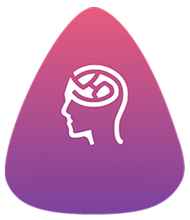Read a report that challenges your strategic view—summarize its strongest insight in one sentence.
Pause and ask: “What’s another way to see this?” when responding to complex stakeholder demands.
Choose one habit to change today—alter the order, method, or tool you rely on as CEO.
Read an article from an unrelated industry—note one idea you could apply in your company.
Challenge a default choice in a low-stakes task—test the opposite approach for flexibility.
Use the phrase “That’s interesting—tell me more” when someone challenges your vision.
Journal about a time rigid thinking limited options—what could openness to alternatives have created instead?
Reflect on your reaction to disruption—do you resist, explore, or experiment with new strategies?
Describe a time you adapted well to market surprises—what kind of thinking helped you shift perspective?
Write about a leadership assumption you’ve outgrown—what influenced you to finally change it?
List three recent challenges—did you consider multiple angles or get stuck in one view?
Explore how curiosity shows in your strategy—when do you ask “what if,” and when do you shut it down?
Present a bold idea to your board that challenges tradition—invite discussion, not immediate agreement.
Switch perspectives in a decision—see it from a regulator’s or competitor’s lens.
Do something intellectually stretching this week—then capture what you learned.
Teach a core concept to your executives as if they were new hires—simplify your thinking.
Respond to disagreement with “yes, and”—build while differing.
Invite your team to challenge your assumptions—respond with questions, not defense.
Ask someone to flag when you appear rigid—what signals do they see that you’re closing down?
Share an example where your mindset shifted recently—ask a peer how their perspective has evolved.
Ask your team for feedback on your openness in brainstorming—do you encourage or close ideas?
Start a conversation with someone outside your sector—ask how they adapt to major change.
Share how you processed a complex decision—invite a peer’s input on where openness was lacking.
Create a “blind spot exchange” with a peer—trade one area you overlook for theirs.
Recast “That’s not how we do it” as “What if we tried once to learn?”—test the mindset in practice.
Replace “That idea won’t work” with “Under what conditions could it succeed?”
Reframe uncertainty as optionality—see more paths, not more problems.
When stuck, ask: “What if the opposite were true?”—see what ideas emerge.
See dissent as insight, not threat—what factor might the other perspective reveal?
Reframe mistakes as data points—adjust the hypothesis and retest.
Notice when you dismiss a new idea quickly—what bias or fear might be shaping that reaction?
Track your inner stance when challenged—do you feel threatened, curious, or neutral?
Observe how you respond to disruption—do you freeze, pivot, or adapt quickly?
Watch someone navigate fast change—what inner stance do they project?
Observe high-performing teams in innovation—what mindsets are visible there?
Track your words in uncertainty—do you ask “what if,” or close doors with “impossible”?


 Give Feedback
Give Feedback
